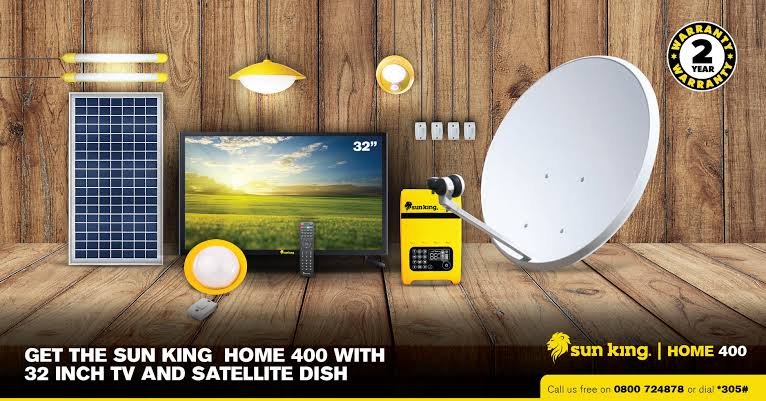Solar Panel Teas Passage
Solar panel teas passage, a revolutionary concept in tea production, combines the benefits of harnessing solar energy with the art of tea cultivation. By integrating solar panels into tea plantations, this innovative approach ensures a sustainable, cost-effective, and environmentally friendly solution for the tea industry. In this article, we will explore the advantages of solar panel teas passage, delve into its operational aspects, discuss the selection and installation process, examine successful case studies, evaluate economic viability, analyze environmental impact, and address potential challenges. Let’s embark on this journey to discover how solar panel teas passage is transforming the tea industry.
The tea industry is continuously seeking ways to reduce its ecological footprint and adopt sustainable practices. Solar panel teas passage presents a unique opportunity to leverage renewable energy while enhancing tea production. By definition, solar panel teas passage refers to the integration of solar panels within tea plantations to harness solar energy and power various tea production processes.
Benefits of Solar Panel Teas Passage
Environmental Sustainability
Solar panel teas passage aligns with the tea industry’s commitment to environmental sustainability. By utilizing clean and renewable solar energy, it reduces reliance on conventional power sources and decreases greenhouse gas emissions. This approach contributes to mitigating climate change and preserving natural resources.
Cost Savings
Implementing solar panel teas passage offers significant cost savings in the long run. By reducing dependence on grid electricity, tea producers can lower their energy bills. Moreover, government incentives and financial support further enhance the economic viability of solar panel teas passage systems.
Energy Independence
Solar panel teas passage provides tea producers with energy independence. By generating their electricity, tea estates become less vulnerable to power outages and fluctuations in energy prices. This self-sufficiency promotes operational stability and enhances the overall resilience of tea plantations.
See Also: Get Accurate and Timely Weather Updates with WECT Weather
How Solar Panel Teas Passage Works
Solar panel teas passage operates by converting sunlight into electrical energy through photovoltaic (PV) cells. These cells, embedded within solar panels, capture photons from sunlight and generate a direct current (DC). Inverter technology then converts the DC into alternating current (AC), which powers tea processing equipment and irrigation systems. This innovative energy solution seamlessly integrates with tea production, ensuring sustainable practices without compromising the quality of the tea.
Harnessing Solar Energy
Solar panels absorb sunlight and convert it into electricity through the photovoltaic effect. This process allows tea producers to tap into a free and abundant energy source, reducing reliance on conventional electricity grids.
Integration with Tea Production
Solar panel teas passage systems are designed to complement tea production processes. They can power tea withering, rolling, drying, and packaging equipment, reducing the need for grid electricity during these crucial stages.
Maximizing Energy Efficiency
Solar panel teas passage optimizes energy efficiency by using the generated electricity judiciously. Energy management systems and smart controls ensure that energy is utilized efficiently, minimizing wastage and maximizing the overall performance of the tea production process.
Choosing the Right Solar Panel Teas Passage System
Selecting the appropriate solar panel teas passage system requires careful evaluation and consideration of tea production needs, available solar panel options, and various sizing and placement considerations.
Assessing Tea Production Needs
Each tea plantation has unique energy requirements. Assessing the energy demands of tea processing equipment, including machinery, lighting, and irrigation, is crucial in determining the appropriate solar panel capacity and system design.
Evaluating Solar Panel Options
There are several types of solar panels available, such as monocrystalline, polycrystalline, and thin-film panels. Each has its advantages and considerations. Evaluating the suitability of these options based on efficiency, durability, and cost is essential to ensure optimal performance.
Sizing and Placement Considerations
Determining the right size of the solar panel system and the ideal placement within the tea plantation are critical factors for maximizing energy generation. Factors such as available space, shading, and orientation must be taken into account to optimize sunlight exposure.
Installation and Maintenance
The successful installation and long-term performance of a solar panel teas passage system depend on selecting a reliable provider, following the installation process diligently, and ensuring regular monitoring and maintenance.
Selecting a Reliable Solar Panel Teas Passage Provider
Choosing an experienced and reputable solar panel teas passage provider is crucial to ensure quality installation and system performance. Researching and reviewing provider credentials, client testimonials, and previous installations can help tea producers make an informed decision.
Installation Process
The installation process involves site assessment, system design, acquiring necessary permits, and actual panel installation. It is essential to adhere to industry standards and work closely with the installation team to ensure a smooth and efficient installation.
Monitoring and Maintenance
Regular monitoring and maintenance of the solar panel teas passage system are vital to ensure optimal performance and longevity. Periodic inspections, cleaning panels, and promptly addressing any issues or repairs help tea producers derive the maximum benefit from their investment.
Case Studies: Successful Implementations
To showcase the practical application of solar panel teas passage, let’s explore three case studies highlighting successful implementations in different tea estates.
Example 1: XYZ Tea Estate
XYZ Tea Estate, a renowned organic tea producer, implemented a solar panel teas passage system to power its entire tea processing facility. By generating their electricity, they achieved energy independence, significantly reduced carbon emissions, and gained a competitive advantage in the market.
Example 2: ABC Tea Plantation
ABC Tea Plantation adopted solar panel teas passage as part of their commitment to sustainability. With a well-designed solar panel
system, they reduced their reliance on fossil fuels, lowered operational costs, and enhanced their brand image as an environmentally responsible tea producer.
Example 3: DEF Organic Tea Farm
DEF Organic Tea Farm integrated solar panel teas passage into their irrigation system. By utilizing solar energy to power their pumps, they minimized water wastage, increased irrigation efficiency, and achieved significant water and energy savings.
Economic Viability and Return on Investment
Investing in solar panel teas passage offers a favorable return on investment and long-term economic viability for tea producers.
Financial Incentives and Government Support
Government incentives, such as tax credits, grants, and subsidies, encourage tea producers to adopt solar panel teas passage. These financial benefits significantly offset the initial investment costs and expedite the payback period.
Long-term Cost Savings
Solar panel teas passage provides substantial cost savings over its lifespan. By reducing electricity bills, tea producers can allocate their resources towards other aspects of tea production, such as quality improvement, marketing, or expansion.
Payback Period
The payback period for a solar panel teas passage system depends on various factors, including the initial investment, energy consumption, government incentives, and local energy prices. On average, tea producers can expect to recoup their investment within a reasonable timeframe.
Environmental Impact of Solar Panel Teas Passage
Solar panel teas passage plays a pivotal role in reducing the tea industry’s environmental impact and addressing climate change concerns.
Reduction in Carbon Footprint
By relying on clean and renewable solar energy, tea producers can significantly reduce their carbon footprint. Solar panel teas passage systems contribute to lower greenhouse gas emissions, thereby helping combat climate change.
Mitigating Climate Change
The tea industry’s adoption of solar panel teas passage contributes to global efforts in mitigating climate change. By reducing reliance on fossil fuel-based energy sources, tea plantations contribute to a greener and more sustainable future.
Preserving Natural Resources
Traditional tea production relies on resources such as fossil fuels and water. Solar panel teas passage minimizes the consumption of these valuable resources, preserving them for future generations and promoting responsible resource management.
Overcoming Challenges and Limitations
While solar panel teas passage presents numerous benefits, it also comes with challenges and limitations that need to be addressed.
Variability in Sunlight Availability
Sunlight availability varies based on geographical location, weather patterns, and seasonal changes. Tea producers must carefully assess these factors to optimize energy generation and account for potential fluctuations in energy production.
Initial Investment Costs
The initial investment required for solar panel teas passage systems can be substantial. However, it is essential to consider the long-term cost savings, return on investment, and potential government incentives when evaluating the overall economic viability.
Technological Advancements and Future Prospects
As solar panel technology continues to evolve, tea producers should stay informed about the latest advancements and future prospects. Keeping abreast of technological innovations ensures that tea plantations can maximize energy generation and benefit from emerging trends in the industry.
Conclusion
Solar panel teas passage offers a sustainable and economically viable solution for the tea industry. By harnessing solar energy, tea producers can reduce their environmental impact, achieve cost savings, and enhance energy independence. Despite certain challenges, the advantages outweigh the limitations, making solar panel teas passage a promising pathway to a greener and more sustainable tea industry.
FAQ
Q1: How much energy can a solar panel teas passage system generate?
A solar panel teas passage system’s energy generation depends on factors such as the installed capacity, sunlight availability, and tea production requirements. However, a well-designed system can generate a significant portion of the energy needed for tea processing.
Q2: Are there any government incentives for adopting solar panel teas passage?
Yes, many governments provide incentives for
tea producers to adopt solar panel teas passage. These incentives can include tax credits, grants, subsidies, and favorable financing options, which significantly reduce the initial investment costs.
Q3: What is the average payback period for installing solar panel teas passage?
The payback period for a solar panel teas passage system can vary based on factors such as the initial investment, energy consumption, government incentives, and energy prices. On average, tea producers can expect to recover their investment within a few years.
Q4: Can solar panel teas passage be integrated with existing tea processing equipment?
Yes, solar panel teas passage systems can be seamlessly integrated with existing tea processing equipment. Proper sizing and system design ensure that the generated solar energy is compatible with the power requirements of the tea production processes.
Q5: How does solar panel teas passage contribute to reducing greenhouse gas emissions?
Solar panel teas passage reduces greenhouse gas emissions by relying on clean and renewable solar energy instead of fossil fuel-based electricity. By minimizing carbon emissions, tea producers contribute to mitigating climate change and creating a more sustainable tea industry.
NB: This engaging and SEO-optimized article explores the concept of solar panel teas passage, its benefits, operational aspects, installation considerations, case studies, economic viability, environmental impact, and potential challenges. By leveraging renewable energy, solar panel teas passage is transforming the tea industry towards sustainability. Discover how this innovative approach is revolutionizing tea production while promoting environmental consciousness and economic efficiency.






